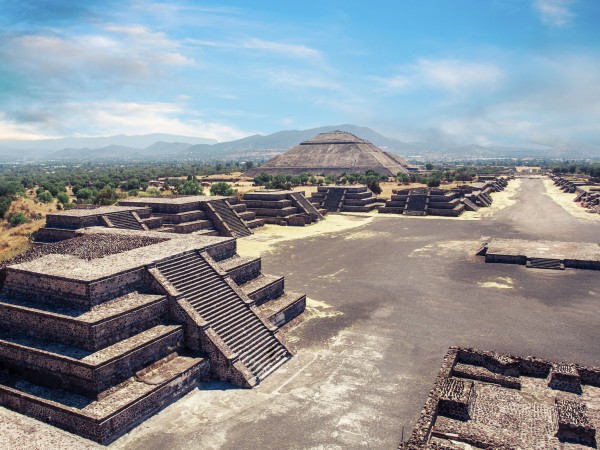
What are these Aztecs Coming to…?
“What are these Aztecs Coming to…?”
Teotihuacan. Pride of Mesoamerica. Largest city of pre-Columbus Americas with a population of 100,000. It must have been difficult, though, to feed such a population in those times. One could not afford a palate for rich cuisine in highlands where the staples were only maize and beans. And that's when the climate did not interfere with droughts, as it frequently did. When it did, the urban natives of America apparently knew with what they would fill their mouths in lean times: Alcohol. But, of a kind which sets their bellies at rest along with their heads, a study shows.
A team formed of Marisol Correa-Ascencio, an organic chemist at Bristol University and anthropologists and archaeologists from Stanford and Arizona State universities as well as from Mexico’s National Institute of Anthropology and History, found that people at Teotihuacan, capital of the Aztec Empire from BC 150 to CE 650, were consuming an alcoholic beverage called pulque.
Publishing their findings in the Proceedings of the National Academy of Sciences, researchers unearthed a collection of jugs used to store pulque dated to CE 200-500 during excavations carried out in Teottihuacan. 14 of the jugs contained vestiges of bacteria involved in fermentation of pulque.
The uniqueness of the drink, made by fermenting the heart of the agave plant in sealed jugs for a few days to allow the bacterium Zymomonas mobilis to turn the contents to ethanol, is its heavy viscosity, similar to that of a traditional Turkish (and Balkans) beverage called Boza, a glassful of which makes one feel full.
The similarity also brings to mind the likelihood that drought-stricken Aztecs, while sipping their pulque to forget their hunger and plight, were engaging in heated political debates about the fate of their country, a popular subject for Turks which inevitably crops up after a few glasses of their national drink, Rakı.
REFERENCES
- 1. “Drinking up at Teotihuacan”, Science Online, 15 September 2014

